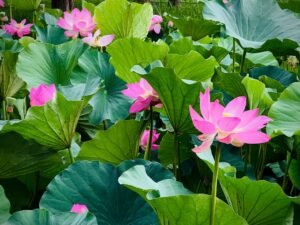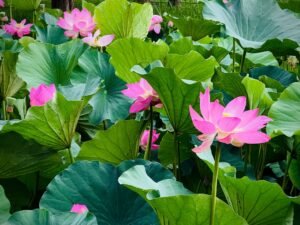

How to Introduce Yourself in Japanese: The 60‑Second Self‑Intro Template
Table of Contents
ToggleIntroduction – big impact in one minute
Whether you step into a Tokyo boardroom, a Kyoto guesthouse or an online gaming lobby, one ritual remains constant: 自己紹介 (jiko shōkai)—the self‑introduction. Unlike the informal “Hey, I’m Alex” of English, Japanese intros follow an implicit structure that signals respect, clarity and situational awareness. Learners who skip this drill often stumble over particles, forget to bow or default to overly casual phrasing that makes the conversation feel off‑key. This article equips you with a plug‑and‑play template, multiple level‑based examples, pronunciation guidance and cultural etiquette so that your very first 60 seconds in Japanese set the tone for lasting connections.
Want feedback on your personal jiko shōkai? Submit your draft in our small‑group workshops at NLS Norwegian Language School. Registration link—spots limited: https://nlsnorwegian.no/no/laer-japansk/.
Why self‑introductions matter in Japan
Japan’s high‑context culture places heavy weight on group harmony. A structured self‑intro immediately clarifies social hierarchy (seniority, affiliation) and shared interests, reducing friction. In companies, newcomers deliver formal jiko shōkai to entire departments; in language classrooms, each student stands and speaks on day one. A polished intro signals diligence and respect—qualities prized by teachers, employers and new friends alike.
Building blocks of the template
| Order | Content | Example phrase | Notes |
|---|---|---|---|
| 1 | Greeting | はじめまして | Only first meeting |
| 2 | Name | ブラウンと申します | Humble mōshi‑masu |
| 3 | Origin | オスロから来ました | Particle から (“from”) |
| 4 | Affiliation/Occupation | NLSで日本語を勉強しています | Present progressive |
| 5 | Hobby/Interest | 写真を撮ることが好きです | Plain form + koto |
| 6 | Closing request | どうぞよろしくお願いします | Seal the intro |
Memorize each chunk, then customize.
Particle & grammar spotlight
-
は (topic particle) – Marks what you talk about. In わたしはオラフです, you spotlight yourself.
-
から (from) – Indicates origin. オスロから来ました = “I came from Oslo.”
-
で (location of action) – NLSで働いています = “I work at NLS.”
-
を (object) – 写真を撮ります = “I take photos.”
-
~ています (ongoing state) – Shows current, repeated action; perfect for “I am studying Japanese.”
Keep verbs in polite form ‑masu ending unless your setting is explicitly casual.
Pronunciation checkpoints
申します (mōshi‑masu): long ō plus unvoiced shi.
よろしく: stress the second syllable “ro,” not the first.
Bowing should coincide with the first half of よろしくお願いします; avoid speaking while bent 45°.
The 60‑second template in full
はじめまして。
私は オラフ・アンデルセン と申します。
オスロから来ました。
今、NLSノルウェー語学院で日本語を勉強しています。
趣味は 写真を撮ること と ハイキング です。
どうぞよろしくお願いします。
Breakdown:
はじめまして → Greeting
私は → Topic “I”
オラフ・アンデルセンと申します → Humble name statement
オスロから来ました → Origin
今、NLS…勉強しています → Current activity
趣味は写真を撮ることとハイキングです → Hobbies joined by と
どうぞよろしくお願いします → Closing request
Read aloud slowly (c. 60 seconds with natural pauses). Swap lines 3 and 4 if job role is more contextually important than hometown.
Sample introductions for four contexts
1. Beginner casual (language meetup)
はじめまして。ケンです。アメリカから来ました。音楽が好きです。よろしく!
Short, no humble verbs. Use this among peers.
2. Intermediate polite (university class)
はじめまして。私はモニカ・リーと申します。韓国の釜山から参りました。経済学を専攻しており、現在日本語能力試験N2を目指しています。カフェめぐりが趣味です。どうぞよろしくお願いします。
3. Business formal (company orientation)
はじめまして。本日より御社でインターンとして勤務いたします、マルティン・ホフマンと申します。ドイツのベルリン出身で、大学では情報工学を学びました。趣味はマラソンとチェスでございます。微力ながら早く戦力になれるよう努力いたしますので、何卒よろしくお願い申し上げます。
Note the shift to honorific verbs (勤務いたします) and the ultra‑polite よろしくお願い申し上げます. Bow 30–45°.
4. Online gaming (voice chat)
やあ、ゆきです!北海道出身の社会人ゲーマー。FPS歴10年で、援護が得意です。よろしくね~。
Cultural etiquette essentials
-
Bowing angles: 15° (eshaku) for casual, 30° (keirei) for standard business.
-
Eye contact: Short glances, not continuous stare.
-
Meishi (business cards): Present with both hands after self‑intro, logo toward receiver, slight bow.
-
Group order: Lowest rank speaks first, senior manager last to close the circle.
Ignoring these cues can overshadow perfect grammar. Observing them often redeems minor linguistic slips.
Five common self‑intro mistakes to avoid
-
Overusing “Watashi wa” – State it once; repetition sounds robotic.
-
Mixing plain and honorific speech in one sentence.
-
Translating jokes literally that rely on English puns.
-
Skipping yoroshiku: Leaves intro feeling incomplete.
-
Forgetting to bow or bowing while speaking entire paragraph.
Practice drills and feedback loop
-
Write your script (50–70 words).
-
Record on smartphone; note filler sounds (“eh…”).
-
Mouth shape check in mirror—pronounce long vowels clearly.
-
Shadow native YouTube introductions at 0.75× speed, then normal speed.
-
Peer review in a study group or submit through NLS classroom portal.
Enroll in our pronunciation clinic: https://nlsnorwegian.no/no/laer-japansk/.
Using your introduction in the wild
-
School: Teachers may ask for a mini‑speech on day one—stick to polite form.
-
Work: State company name and department; mention goal of contributing to the team.
-
Networking events: Add a hook (unique hobby) to aid memory.
-
Online communities: Casual style acceptable, but start with はじめまして to show courtesy.
Adjust length and register depending on context but keep the skeleton intact.
Conclusion & next steps (≈ 140 words)
A confident 60‑second jiko shōkai plants seeds of trust. Combine clear structure, courteous grammar and controlled delivery, and listeners will focus on your message rather than your mistakes. Memorize the template tonight, personalize it tomorrow, and by the weekend you will have the key to countless new conversations. Pair this skill with the greeting set from Article 1 and you possess the twin pillars of Japanese social language.
Eager for expert corrections and live drills? Our upcoming NLS Japanese Starter and Conversation courses reserve dedicated class time for self‑introductions and feedback. Secure your place today: https://nlsnorwegian.no/no/laer-japansk/.
If you want to learn Norwegian, you can register for classes here. We look forward to hearing from you and helping you become fluent in Norwegian.





